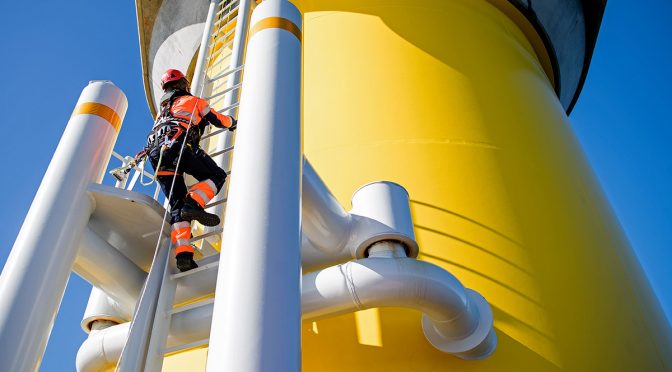Harnessing the power of wind as a renewable energy source has become increasingly important in recent years, as countries around the world strive to reduce their dependence on fossil fuels and lower their greenhouse gas emissions. Wind turbines, which convert the kinetic energy of wind into electricity, have emerged as a key component of this transition to a more sustainable energy future. As the demand for wind energy continues to grow, so too does the need for innovative materials and technologies that can help maximize the efficiency and durability of these turbines. One such material that has been making waves in the wind energy sector is advanced high-strength steel (AHSS).
Advanced high-strength steels are a class of materials that offer exceptional strength and ductility, making them ideal for use in a wide range of applications, from automotive manufacturing to construction. In the context of wind energy, AHSS has proven to be particularly valuable in the design and production of wind turbine towers and rotor blades, which must be able to withstand the immense forces generated by the wind while also remaining lightweight and cost-effective.
One of the primary benefits of using AHSS in wind turbine construction is its ability to reduce the overall weight of the structure. This is particularly important for the turbine’s tower, which must support the weight of the nacelle and rotor blades while also remaining stable in the face of strong winds and other environmental factors. By utilizing AHSS, manufacturers can create thinner, lighter tower sections that still maintain the necessary strength and rigidity. This not only helps to reduce material and transportation costs but also allows for the construction of taller towers, which can capture stronger and more consistent winds at higher altitudes.
In addition to its weight-saving properties, AHSS also offers significant advantages when it comes to the fabrication and assembly of wind turbine components. Its high ductility allows for more complex and precise shaping, which can help to improve aerodynamics and overall efficiency. Furthermore, the superior weldability of AHSS means that sections can be joined together more easily and securely, reducing the risk of structural failures and increasing the lifespan of the turbine.
The use of advanced high-strength steels in wind turbine rotor blades is another area where this material has shown great promise. Rotor blades are subjected to enormous stresses and strains as they rotate at high speeds, and they must be able to endure these forces without breaking or deforming. AHSS provides the necessary combination of strength and flexibility to ensure that the blades can withstand these extreme conditions while also maintaining their shape and performance.
As the wind energy sector continues to evolve and expand, the role of advanced high-strength steels is likely to become even more significant. With ongoing research and development, new grades of AHSS are being developed that offer even greater strength and ductility, as well as improved corrosion resistance and other desirable properties. These advancements have the potential to further enhance the performance and reliability of wind turbines, making them an even more attractive option for meeting the world’s growing energy needs.
In conclusion, advanced high-strength steels are playing a crucial role in the ongoing growth and development of the wind energy sector. By enabling the construction of lighter, stronger, and more efficient wind turbines, AHSS is helping to drive the transition to a more sustainable energy future. As research and innovation in this field continue to progress, it is clear that the potential of AHSS to revolutionize the wind energy industry is only just beginning to be realized.


